The near future medical innovations that the scientific community intends to use to combat rare, severe, and incurable diseases of the present are included in the Revolution Notes selection.
Fantastic future possibilities have started to appear before our eyes with the development of digital medical technologies, such as 3D printing of human organs and tissues, artificial intelligence (AI), virtual and augmented reality (VR/AR), and nanotechnology.
Some robots will function at the human level shortly, while others the size of baker’s yeast will start treating complicated cancer disorders. We have compiled a list of the newest medical innovations that are expected to gain notoriety soon and have revolutionized the field in recent years.
1. CRISPR-Cas9 genome editing technology
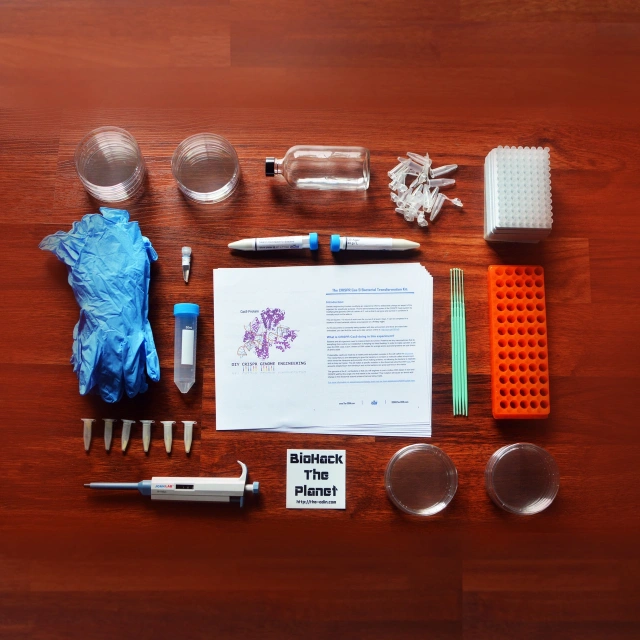
Gene editing is a promising area of molecular biology. And one of the most popular editing tools is the CRISPR-Cas9 system. In 2020, scientists Emmanuelle Charpentier and Jennifer Doudna received the Nobel Prize for its development.
The CRISPR-Cas system is part of the adaptive immunity of bacteria and archaea. It consists of two blocks – CRISPR and Cas – and protects its host from bacterial viruses at the molecular level.
CRISPR are sections on the DNA of bacteria into which information about viruses that once attacked the host cell is embedded. A block with unique information about a specific virus is called a spacer. The information in the spacers allows CRISPR to track the re-entry of the same virus.
The second element of this molecular mechanism is the Cas protein. It acts like molecular scissors and cuts into fragments foreign DNA that penetrates the bacterial cell.
When bacteria are re-infected, CRISPR uses a spacer to find information about familiar foreign DNA and direct the Cas protein to target the pathogen.
There are a number of CRISPR-Cas systems, but most often in laboratories they resort to the most targeted technology of genetic scissors – CRISPR-Cas9. It was faster, cheaper and more accurate than other editing methods.
The system consists of CRISPR, Cas9 protein and guide RNA (sgRNA). The sgRNA directs Cas9 to its killing target. The Cas9 protein cuts this section, then the cell repair system is launched. And then biotechnologists introduce the desired DNA sequence into the target area.
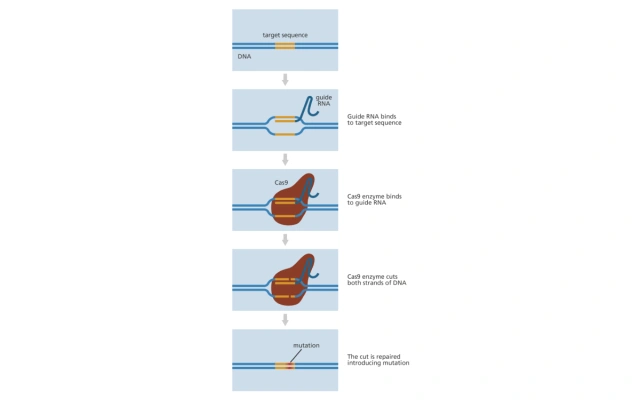
Doudna and Charpentier found that such systems work not only in bacterial cells. They can be transplanted into the cells of higher organisms using carrier molecules. The molecule, which contains the CRISPR-Cas9 system, is introduced into cells and allows scientists to use molecular scissors for their own purposes.
With the help of CRISPR-Cas9, it becomes easier to study and treat monogenic diseases such as hemophilia, cystic fibrosis, Alzheimer’s disease (one form) and others.
Thus, in 2023, therapy based on CRISPR-Cas9 was approved for the first time in the world. In the UK, a drug with the trade name Casgevy will be used to treat sickle cell anemia and beta thalassemia. In these diseases, the functioning of hemoglobin is disrupted. Therapy takes place in three stages. The patient donates blood, the cells of which undergo genetic modification.
Scientists turn off the BCL11A gene in blood cells. The fact is that during the development of the fetus, a special – fetal – type of hemoglobin is produced in its body. The BCL11A gene suppresses the production of fetal hemoglobin after human birth. After genetic modification, the production of fetal hemoglobin is resumed, and it gradually replaces adult hemoglobin. The edited blood cells are then injected back into the patient.
The whole process takes several months, and the therapeutic effect, according to scientists, extends for many years.
2. mRNA vaccines

In 2023, biochemists Catalin Carico and Drew Weissman won the Nobel Prize in Physiology or Medicine. They received their award for developing technology that made it possible to create effective mRNA vaccines against COVID-19 quickly. So, on the 63rd day of development, the future vaccine was already undergoing its first clinical trial.
mRNA vaccines are being utilized to treat a wide range of illnesses. The vaccine works on this basic principle: it trains human immune cells to produce copies of the pathogen’s spike protein, also known as S-protein or spike protein, by reproducing segments of the viral mRNA. The infection enters the body’s cells with the aid of S-proteins.
When the vaccination carrier encounters a genuine threat, his immune memory is activated, causing the cells to promptly identify the threat and prevent the virus from growing.
Thus, in 2023, a group of scientists from New Zealand and Australia, led by Professor Gavin Painter, developed an mRNA-based vaccine to protect against malaria. And in 2024, researchers from the biotechnology company Moderna (USA) published results on a new mRNA vaccine against cytomegalovirus.
The drug is still in the final stage of clinical trials. The shot shows 50 percent effectiveness in numerous studies. Project leader Sally Permar suggests that further research could lead to the registration of the vaccine in the coming years.

Anti-cancer vaccines are also being actively developed. This applies, for example, to a rather rare and aggressive form of cancer – pancreatic cancer. Thus, the five-year survival rate for this cancer, according to research by the American National Cancer Institute (period from 2013 to 2019), is only 12.5%.
An mRNA vaccine may prevent tumors from returning after surgery. The authors of an article published in the journal Nature came to these conclusions. The study was led by Professor Vinod Balachandran from the Memorial Cancer Center. Sloan-Kettering in New York.
Although the experimental group included only 16 patients, this is the first example of the successful development of a vaccine against pancreatic cancer. After six months of examinations, half of the trial participants went into remission.
3. Smart tablets
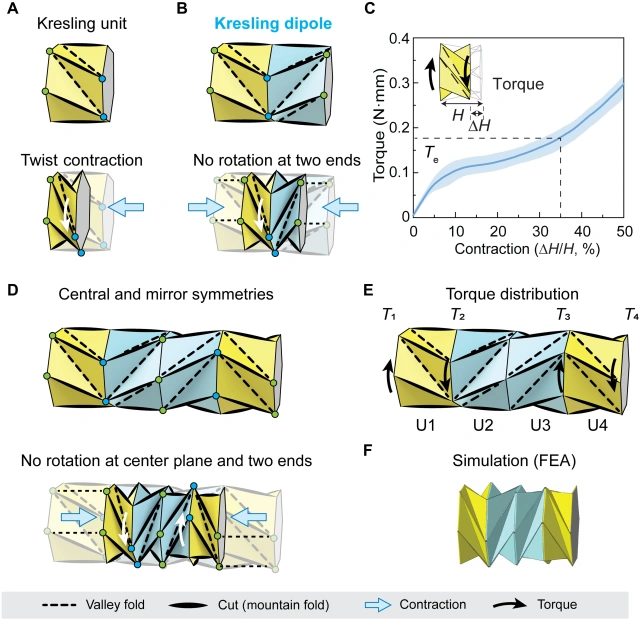
The development of “smart” tablets is considered one of the promising areas of biodegradable electronics. The idea is that the patient swallows a tablet-sized device. It usually consists of polymer electrodes that replace the pill’s motor and make it move. The device is placed in a biodegradable capsule.
Once in the gastrointestinal tract, the tablet analyzes the condition of tissues, stimulates muscles with electricity or delivers medications. Having completed its work, it leaves the body naturally.
Most often, smart tablets are used in capsule endoscopy. The patient swallows a device with a built-in video camera, after which the capsule begins to photograph the gastrointestinal tissue.
As a result, the need to use an endoscope tube disappears. However, experts insist that such a system does not replace endoscopy: it cannot take materials for a biopsy, so its diagnostic value is lower than that of traditional procedures.
A group of biotechnologists from Stanford and Ohio State University also created a device that can be inserted into hard-to-reach areas of the body. The robot looks like an earthworm: it contracts certain parts of its mechanism, pushing others apart like an accordion.
The caterpillar’s gait allows it to overcome the resistance of body fluids and firmly anchor itself in the area being examined. The authors of the invention believe that their development can be used in endoscopy, biopsy, and for targeted drug delivery.
4. 3D printing of organs and tissues
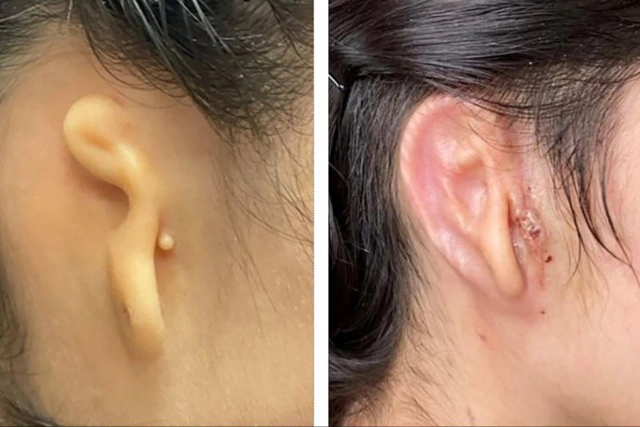
3D printing is considered one of the most promising technologies for creating artificial organs today. The first successful transplant of an artificial organ based on patient cells occurred in 2022. The American company 3DBio Therapeutics printed an ear for a 20-year-old girl.
Modern 3D bioprinters create organs in several stages. First, a complete three-dimensional model of the macro- and microstructure of the organ is built on a computer using MRI and CT images. Then the patient’s stem cells are selected, which in the future will form into cells of muscles, skin, urethra, etc.
Scientists populate a printer cartridge with cells, where they are kept in a hydrogel. During the printing process, bioink cells are transferred layer by layer from the cartridge to the substrate and are connected under the action of surface tension forces into a computer-specified shape.
The resulting “spare part” is placed in a biological environment, where it “ripens” for several weeks. At the last stage, the organ is transplanted and how it takes root in the body is monitored.
In addition to additive (layer-by-layer) printers, there are printers that use collagen as ink. These printers print the missing tissue directly onto the wound.
A new type of such printer was developed in 2023 by bioengineers from the University of New South Wales in Sydney. Australian scientists have presented a prototype that prints cells directly onto the organs of the gastrointestinal tract. The device penetrates the body like an endoscope and replaces damaged cells with new ones. The printer delivers them directly to various segments of the gastrointestinal tract.
This minimally invasive method of cell delivery avoids surgery and, therefore, postoperative complications. The device was tested on a simulated colon. At the next stage, the printer will be tested on animals.
5. CAR-T therapy
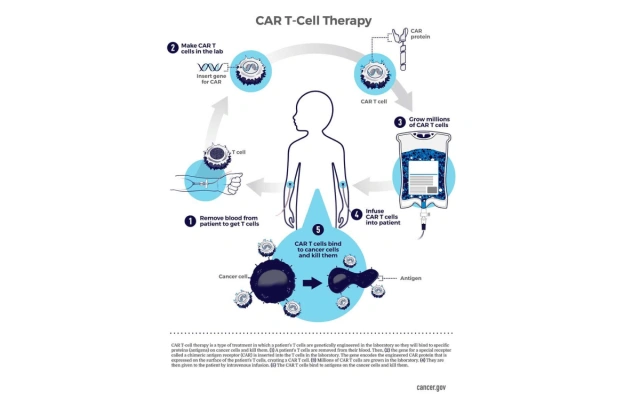
For many years, the traditional methods of treating cancer were surgery, chemotherapy and radiation therapy. They continue to be the mainstay of treatment, but new immunotherapies such as CAR-T therapy are being rapidly introduced.
Immune T cells are responsible for recognizing foreign DNA in the body and find the pathogen using chimeric antigen receptors (CARs). CAR-T therapy allows you to reprogram these T-cell receptors so that they recognize not only foreign DNA, but also tumor cells in your own body and destroy them.
Since 2017, the US Food and Drug Administration (FDA) has approved six CAR T-cell therapies to treat aggressive forms of lymphoma, leukemia and multiple myeloma.
The technology has also been used to combat aging, although so far only in mice. At the beginning of 2024, a study was released in which scientists use CAR-T to destroy senescent cells. A group of American biologists led by Corina Amor from the Cold Spring Harbor Laboratory has high hopes for CAR-T in the fight against age-related metabolic dysfunction – aging cells that have not yet died.
As we age, the immune system becomes less able to eliminate such cells. Because of this, they accumulate, increasing the likelihood of chronic inflammation. The study was conducted on 20-month-old (elderly) and three-month-old (young) mice.
After administration of CAR T cells, the older rodents showed improved metabolism, with decreased fasting blood glucose levels and decreased insulin resistance. They became more active and resilient.
A year after injecting T cells into young mice, they had significantly reduced body weight and a reduction in the number of senescent cells in the pancreas, liver and fat tissue.
6. Robot surgeons
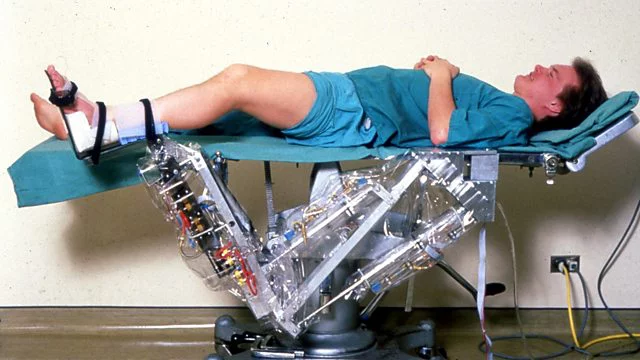
Robotic surgery began to develop in the 1980s. It is believed that the robot Arthrobot, an assistant to surgeons, was a pioneer in it. The first operation with his help took place on March 12, 1984,, at UBC Hospital in Vancouver. During the year, local surgeons performed more than 60 operations using Arthrobot. Improved models of the machine still assist orthopedic surgeons.
The market for AI in medicine is currently growing rapidly . According to GlobalData , the number of operations using robots will increase by 10.5% every year until 2030. By this point, about 87% of surgical operations will be performed by robots.
One of the first automated devices in surgery was the da Vinci system from Intuitive Surgical. The da Vinci prototype was developed in the USA in the late 1980s. And today this platform is used all over the world.
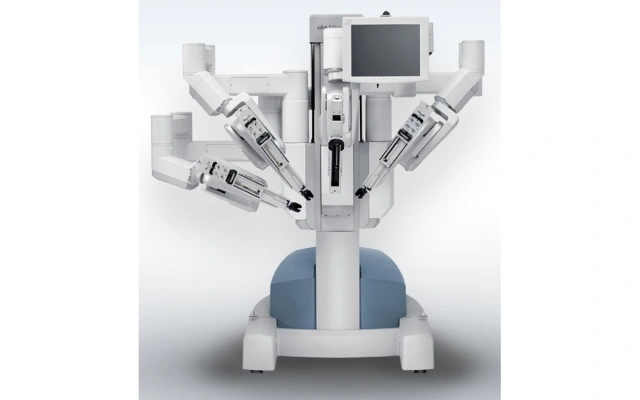
Another popular robotic surgery tool is The CyberKnife from Accuray Incorporated. It is used for radiation therapy for cancer. The system includes a robotic arm with a linear accelerator that irradiates tissue from different angles.
VR technology corrects the radiation supply. The device does not damage (or minimally damages) the surrounding healthy tissue and allows you to achieve an effect in fewer sessions than with traditional radiation therapy. The system is most often used to irradiate tumors in hard-to-reach areas, such as the brain and spine.
The successful operation of the Smart Tissue Autonomous Robot, developed at Johns Hopkins University, can be considered a breakthrough in robotic surgery. In 2022, he performed surgery on a pig’s intestines, acting completely autonomously.
7. Micro- and nanorobots
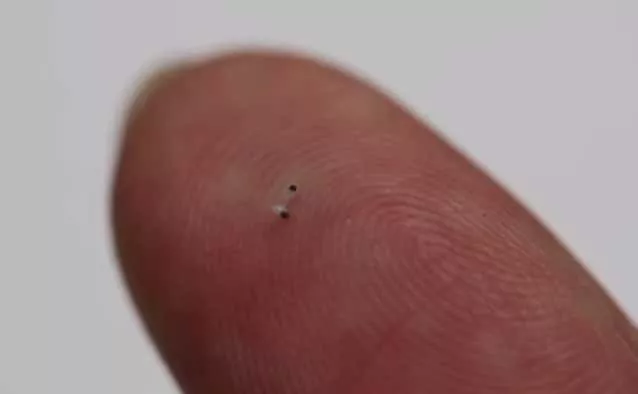
Micro- and nanorobots are called promising tools for diagnostics and therapy in the scientific community. The volume of this market in 2022 exceeded $6.96 billion. It is expected that by 2032 it will reach $32.19 billion.
Nanorobots are particularly effective for targeted delivery of drugs to target cells. The size of nanorobots varies from 1 to 100 nanometers (1 mm = 1 million nm), and microrobots – from 100 nanometers to 100 micrometers (1 μm = 1 thousand nm).
The incredibly small size of devices of this type is their main advantage. Thus, a group of Chinese researchers led by Professor Hong Pan created a biocompatible nanorobot using baker’s yeast for the treatment of the gastrointestinal tract.
Scientists called the development TBY-robot. This nanorobot is covered with a shell from the yeast Saccharomyces cerevisiae, and TBY runs on a biochemical engine – macrophage enzymes. Macrophages can penetrate biological barriers and target inflamed areas, delivering targeted drugs.
An experiment on mice showed good results: the biochemical parameters of the blood in mice improved, and the volume of accumulated medicine increased in the affected area by about a thousand times, as a result of which inflammations such as colitis and stomach ulcers were significantly weakened.
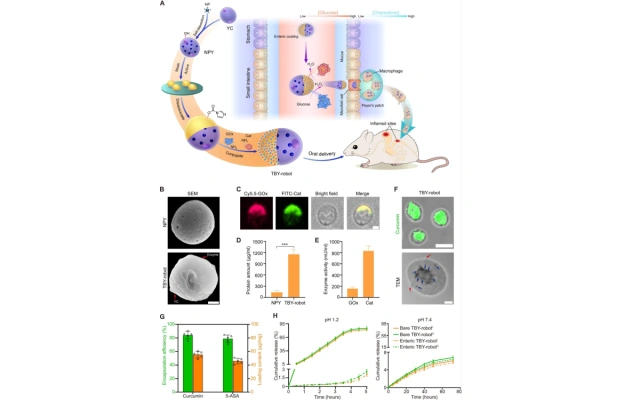
Spanish scientists have used a nanorobot to deliver anticancer therapy to target cells. A group of biochemists from the Institute of Bioengineering of Catalonia has created microspheres with an artificial radioactive isotope – iodine-131. This form of iodine is used in the treatment of cancer. The nanorobot delivered iodine-131 directly to cancer cells. This made it possible to distribute the drug more precisely and evenly across malignant tissues. “With a single dose of nanoparticles, we achieved a 90 percent reduction in tumor volume in rodents,” said study leader Dr. Samuel Sanchez. The diameter of such a robot was only 450 nm.
8. NGS sequencing

Next generation sequencing (NGS) is an essential tool in modern genetics. NGS includes a group of methods that geneticists use to study the nucleotide sequences of DNA and RNA. The methods differ in speed, reproduction accuracy and price.
NGS sequencing allows parallel sequencing (deciphering) of millions of DNA segments and provides detailed information about the structure of the genome and the activity of certain genes. The global NGS market is expected to grow due to the rapid commercialization of the technology. In 2022, it was estimated at $8.26 billion. By 2032, it could reach $48.01 billion, with an average annual growth rate of 19.24%.
In pursuit of cheaper and more accurate technologies, Illumina brought the NovaSeq X device to the market in 2023. The development team stated that the device will allow deciphering the human genome for $200
The growing demand for genetic research is driven not only by NGS technology, but also by other approaches, such as single-cell genomics and spatial transcriptomics. All of these methods rely on DNA sequencing.
9. Digital tattoos
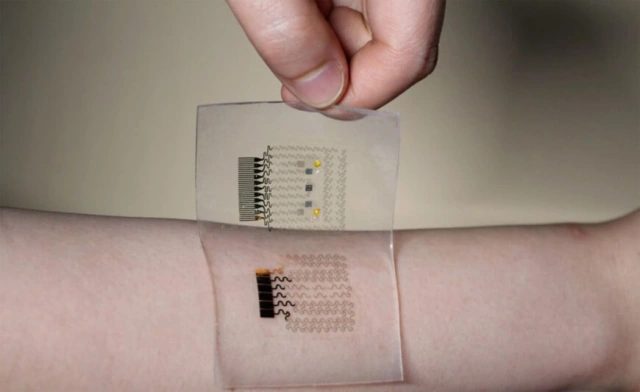
An electronic tattoo is a wearable circuit with built-in sensors that is attached to the skin and transmits data remotely. Digital tattoos last on the skin from several days to several weeks.
With the help of such tattoos, you can monitor your pulse, glucose level, body temperature, or analyze the chemical composition of blood, sweat and saliva. Tattoos in medicine are used not only in diagnostics, but also in surgery. For example, for marking areas of the skin during radiotherapy.
In the future, such devices may allow non-invasive monitoring of the patient’s general condition: cardiac arrhythmia, brain disorders. This is especially important for monitoring premature babies. Going even further, high-tech electronic tattoos could track brain signals with enough precision to control a computer.
10. Neuroprosthetics and  -computer interface
-computer interface
Neuroprosthetics deals with the implantation of artificial devices to restore the functions of the nervous system or sensory organs. The most popular neuroimplant today is auditory. It is expected that by 2050, almost 2.5 billion people will have hearing problems that require such a hearing aid. According to a report published by Facts & Factors, the global cochlear (hearing) implant market was worth approximately $1.45 billion in 2022.
The most famous example of implantable brain-computer interfaces is Telepathy, minimally invasive chips from Neuralink. In January 2024, the neurochip was implanted into a human for the first time. And in February, the head of the company, Elon Musk , said that a participant in the experiment “can move the mouse across the screen just by thinking about this action.”
The implant, according to its creators, will allow you to control your smartphone and other gadgets with the power of thought. First of all, it is designed for people with disabilities. At the same time, experts emphasize that this cannot be called a radical breakthrough: neurochips have been tested on humans and animals since the end of the 20th century.
Another example of the use of AI implants in 2023 was shown by a group of American scientists led by Dr. Edward Chang. They implanted a neuroprosthesis in the woman that converted brain signals into written and spoken speech.
The testers created an avatar and a voice that reproduced all the information from the implant on the tablet. Thus, the device returned to a patient with paralysis the ability to communicate with people around her. The study was published in the journal Nature